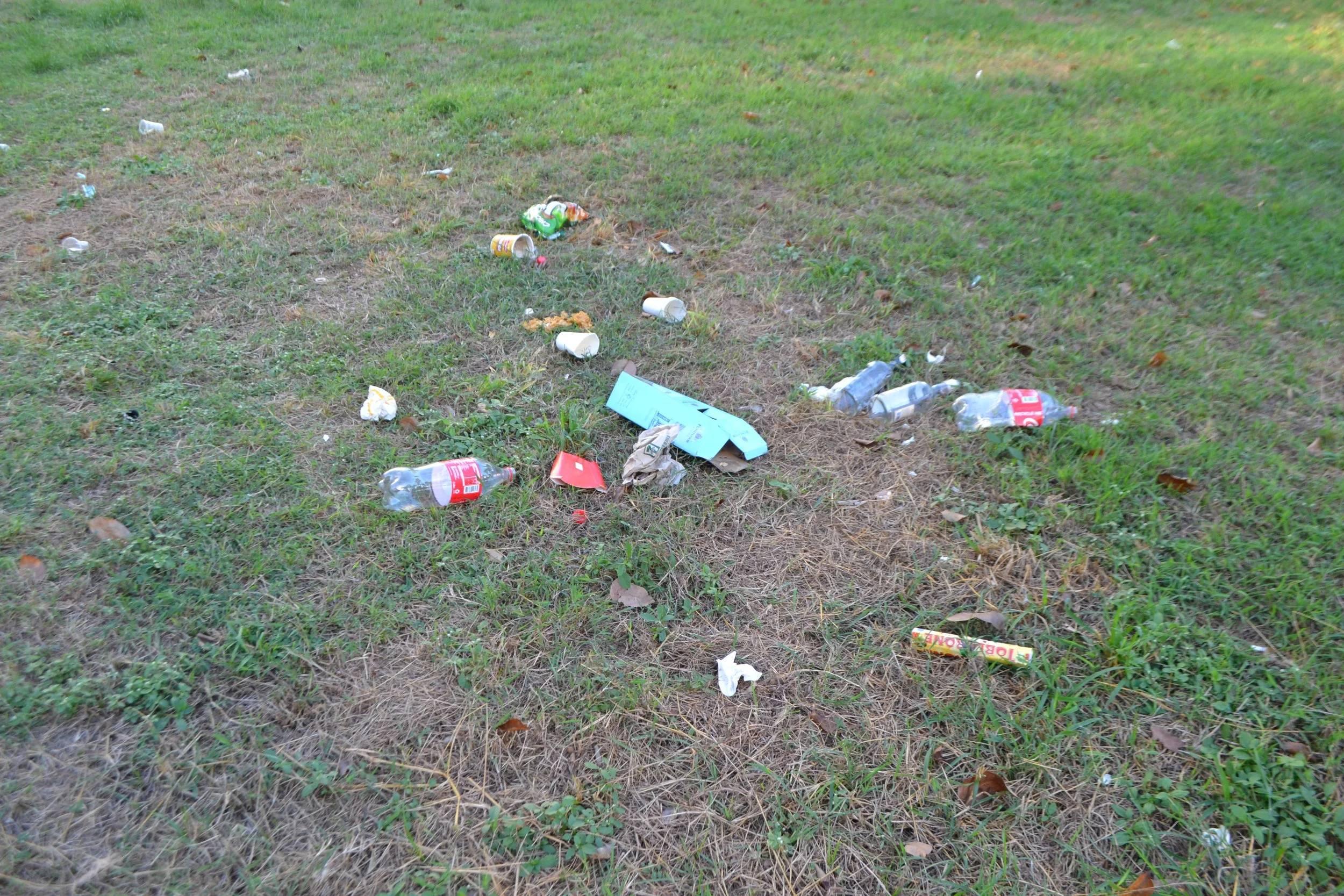OPINION: Overconsumption: Halloween’s latest and scariest trick
Photo via Wikimedia Commons
Emily Hall, a junior studying history, argues that Halloween has become a holiday dominated by overconsumption habits that are not sustainable for neither consumers nor the planet.
Scary ghosts, creepy spiders and terrifying witches are all classic symbols of Halloween. However, the real horror surrounding the holiday is not seen in movies, but rather the staggering overconsumption from American consumers. From disposable decorations to single-use costumes, the shocking display of wasteful excess and overconsumption is defining the holiday season.
Every year, American consumers spend more and more to celebrate Halloween. This year alone, Halloween spending is expected to reach a record $13.1 billion, beating the previous $12.2 billion record set in 2023.
The increase in consumer spending can be partially attributed to the rising cost of Halloween products. As a result of the high tariffs earlier this year, many costume and decorative products were halted since it would be too costly to bring them into the U.S. for the Halloween season. Today, the inventory for Halloween products is not only limited in quantity, but also costs noticeably more than in previous years.
However, the rising costs of Halloween goods are not expected to detract American consumers from purchasing this Halloween season. This can be credited to the excessive consumption trend that America is undergoing today that reaches its peak during the holiday season.
Overconsumption has become the newest trend and is glorified all over social media. Platforms like TikTok and Instagram are constantly promoting a cycle of new and unique trends, and are increasing the demand for new items while discouraging reuse.
Fast fashion retailers, like Fashion Nova and Shein, have fueled the abundance of trendy, low-quality costumes that are designed to be worn only once. While they are inexpensive and follow the latest trends, after Halloween, these costumes are usually discarded and contribute to the excess waste after the holiday season. This cycle of buying new costumes every year only promotes a culture of overconsumption that will likely get worse the longer it continues.
Many Halloween costumes are made with cheap synthetic fabrics like nylon and polyester. These fabrics are not only cheap and mass-produced, but are also low-quality and not made to last long-term. During the holiday season, American consumers contribute around 2,000 tons of plastic waste with their mass-produced costumes, and over time, this plastic waste turns into microplastics, which takes decades to centuries to completely decompose.
The cycling of trends extends into home decor and Halloween decorations. Every holiday season, there is a new style trending on social media and enticing people to purchase new goods and home decor. According to Forbes Magazine, this Halloween season, the Netflix series Wednesday has inspired people to move away from classic cartoonish ghouls in favor of spooky-chic, a blend of the holiday’s eerie spirit with sophisticated design elements.
While the ‘spooky-chic’ trend is certainly visually appealing, it is influencing consumers to purchase more items in order to fit with the current trend. This design trend is also unlikely to last past this holiday season because most home decor trends have an average lifecycle of only 10 months. By next Halloween, a new decor style will be trending on social media and items bought during the ‘spooky-chic’ trend will be considered outdated and more likely to be thrown away in favor of the new trendy items.
The pressure to purchase new costumes and decorations every year has influenced many consumers to actively engage and participate in overconsumption during the holiday season, whether they realize it or not.
In addition, holiday pop-up retailers, such as Spirit Halloween, thrive on mass-producing low-quality products that are not made to last. Many consumers purchase these products to use one time and then are destined to live in the back of their closet for the remainder of their lives. This is not only a waste of money, but also contributes to the growing practice of overconsumption.
With Halloween increasing in popularity over the past few years, many people have the desire to celebrate the holiday more outwardly. This year, 78% of Halloween shoppers are expected to purchase seasonal decorations and spend $4.2 billion in total. These decorations are often made from single-use, non-recyclable plastics and are not made to withstand multiple holiday seasons. After Halloween, they often end up in landfills and add to the holiday’s contribution to pollution and overconsumption.
However, it is not just the single-use costumes and cheap decorations that are making a negative impact. Americans are expected to spend around $3.9 billion on candy alone during this upcoming Halloween season, with the average trick-or-treater generating about a pound of trash.
Leftover candy wrappers are some of the biggest sources of litter and waste during the Halloween season. Individually wrapped candies are difficult to recycle because of leftover food residue and their mixed material wrappers. They take years to decompose and typically make their way into landfills or the ocean. According to a report from Ocean Conservancy, candy and snack wrappers are the most common litter found in our oceans and total more than plastic bottles and straws combined.
It is without question that overconsumption is a serious issue in America, especially during the Halloween season. However, there are ways to combat this and to consume better going forward.
Thrift stores have a variety of high-quality clothing and costumes that are available to be purchased at a low cost while also keeping them out of the landfill. Additionally, everyday items from your closet can be used to create a unique costume. By repurposing clothes you already own, there is a low cost to your wallet and the environment. If you do choose to buy a new costume, which is understandable, look for one made with high-quality materials that can be reused another year or as regular clothing.
Halloween decorations can also be reused for many years. There is no need to purchase a new set of decor every year. It is important to remember that trends fade and recycle every year. Just because the decorations you loved last year are not the newest fad, does not mean you cannot use them to decorate this year.
Halloween is, no doubt, a wonderful holiday that offers unique costumes, fun social outings and an outlet for creativity, but overconsumption is not just shaping how we celebrate, it is defining it. This holiday season, be mindful of what you purchase, reuse what you can, and remember: the scariest part about Halloween should not be our consumption habits.

